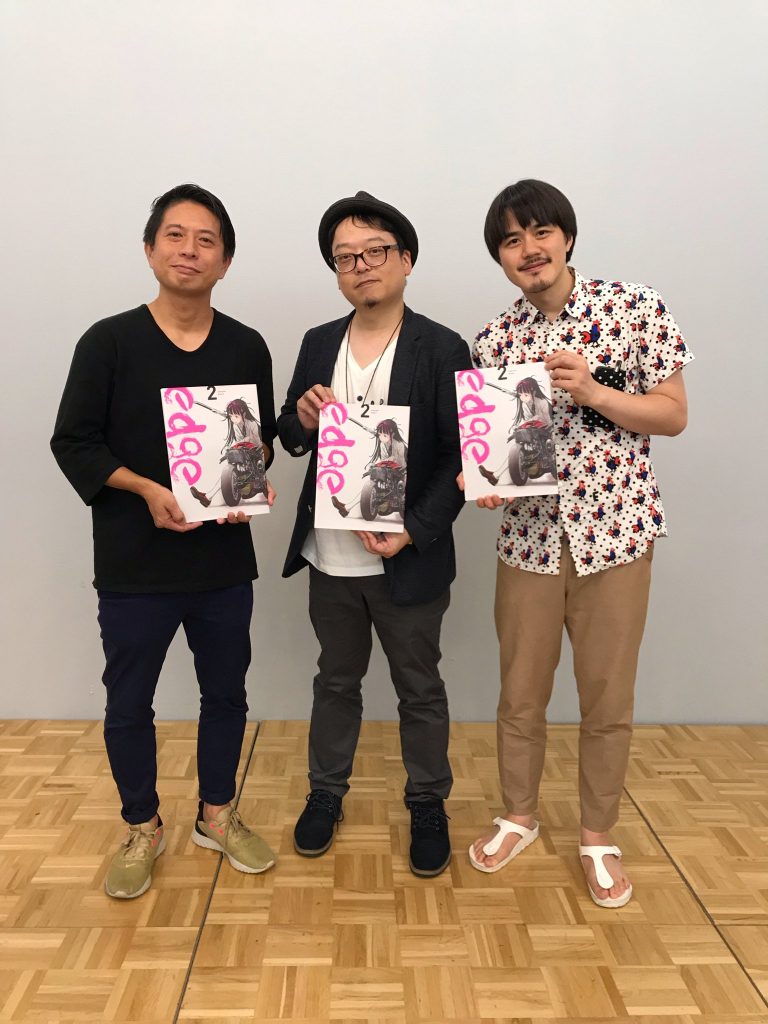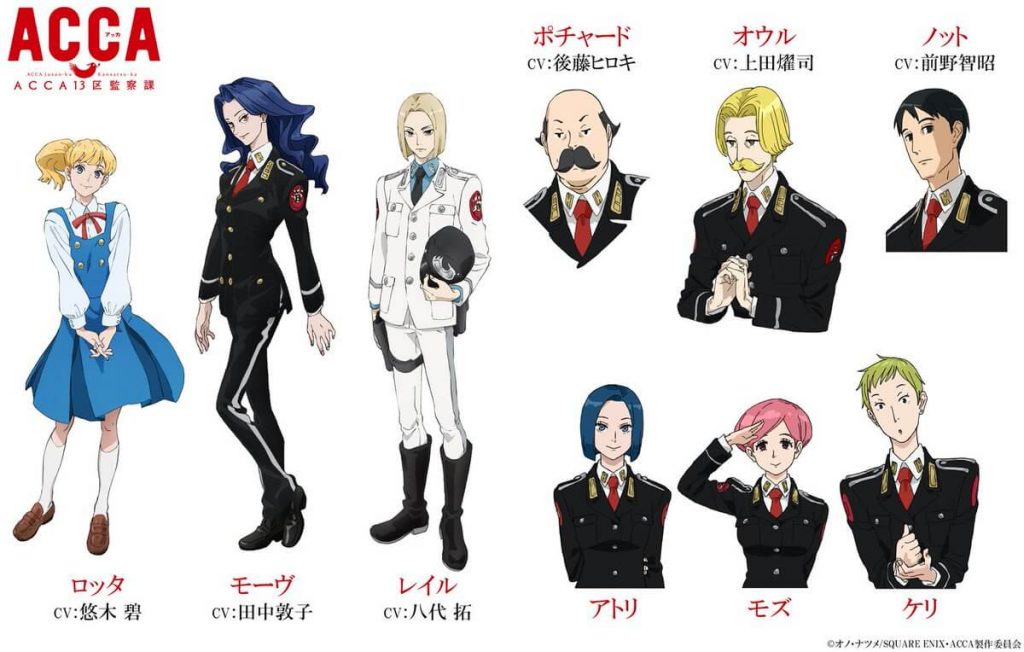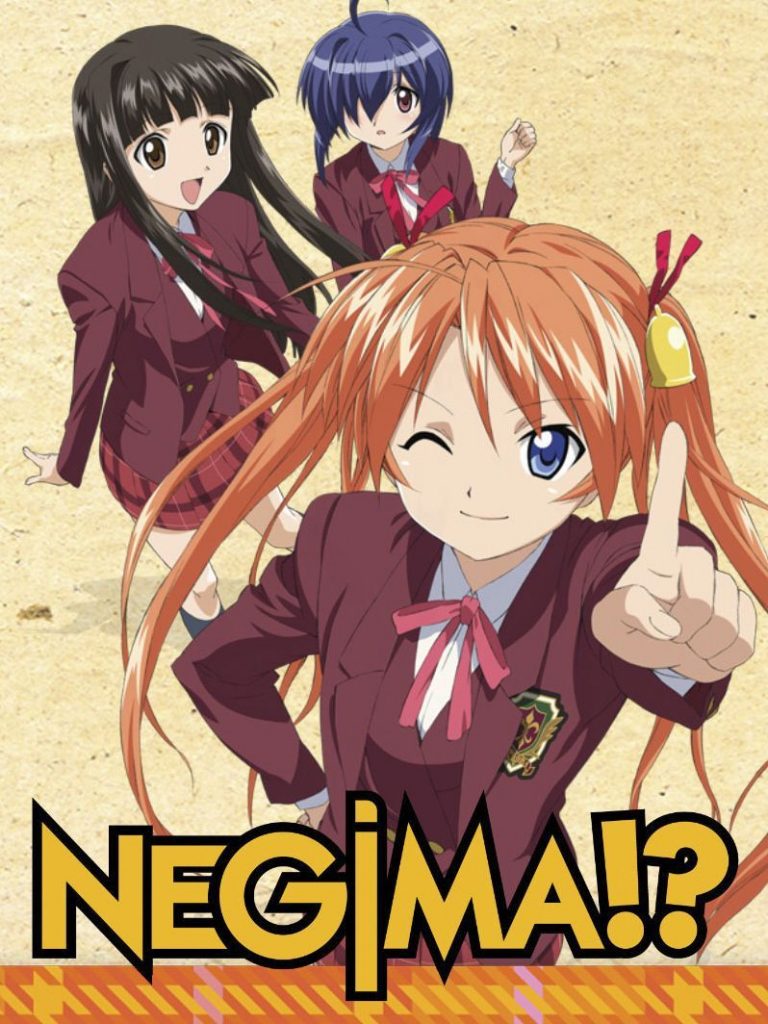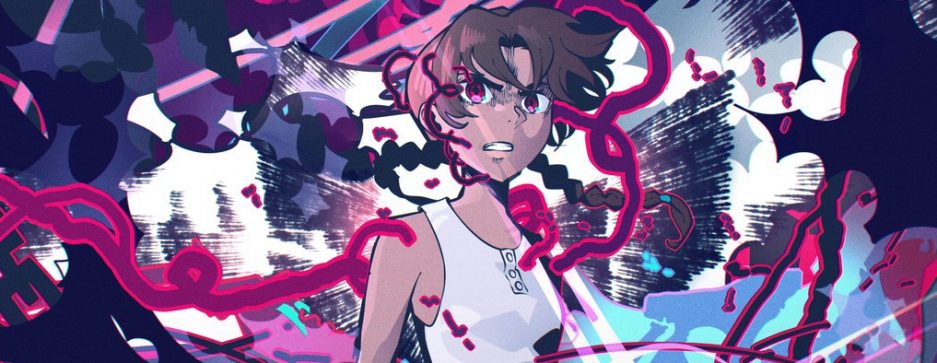HiMyNameIsChair: When you think of Studio Xebec, your mind likely wanders to a number of things: A vast catalogue of ecchi titles ala Love To Ru and Keijo, the studio’s mecha work, such as Nadesico, Lagrange and Fafner, or perhaps it’s long stint with the Rockman franchise. However, one of the aspects of the studio’s legacy that isn’t as well-remembered is the vast amount of talent that would come and go from the studio throughout its existence, many of whom began their careers at Xebec. This includes many directors and animators who today are now prominent figures in the industry, far too many for me to casually list off in this brief introduction. Beyond being the genesis of their careers, Xebec would help to establish important industry connections between its alumni. These bonds between former colleagues would be crucial, and over the years would culminate with Xebec’s former staff gathering on several projects together such as Working!, Idolm@ster, Flip Flappers, Eromanga Sensei, and most recently: I Want to Eat Your Pancreas.
As much as I’d love to go into a more detailed look into Xebec’s history, and the work many of its former staff managed to create at the studio, that is a topic for another day, and one that frankly needs its own article given the scope. However, what we do have for your reading pleasure today is a translation done by our good friend FAR, from a report of the Edge2 Concept Magic Creator’s Talk event done by YnkL, where Kiyotaka Oshiyama (Flip Flappers), and Shingo Adachi (Sword Art Online, Galilei Donna, Working!!, Character Designer), two of the most prominent alumni from Xebec, told stories from their days at the studio!
Edge2 concept magic」Creator’s Talk
Date: Sunday, September 8, 2019 14:00
Location: DNP Plaza 2F Event Zone Tokyo Anime Center
Guests: Shingo Adachi, Kiyotaka Oshiyama, Tetsuya Nakatake and Funs-chan.

The monster adopted by Adachi
Adachi: Koichi Kikuta is for sure our strongest “monster”. I got acquainted with him watching his gifs on the internet. He wrote on a bulletin board system that he wanted to become an animator but he didn’t know what to do to achieve his dream, so I gave him my contact to give him some advices. When he told me that he got rejected by Production IG, MADHOUSE and J.C. Staff I reveled my name and I invited him to get an interview with XEBEC. Since I knew him only through the internet I didn’t know both his gender and his age, so only after the interview I was told that he was 19 years old and passed it without problems.

There were also other people like Kugaimen (Norifumi Kugai). His most well known work is One-Punch Man.
Nakatake: Speaking of Kugai, his designs for “ACCA 13” were unusually simple but at the same time very cool. When I was interviewed I remember there were two other people and the requisitions were a little bit strict. I chose XEBEC as my first choice, I was really afraid of being 30 years old without a job if I got rejected (fortunately, he soon found a job at Production IG, NdT).

Oshiyama: Those 5 years passed so fast. “We lived our everyday so desperately that 5 years passed in a blink of an eye”.
Speaking of Oshiyama
Oshiyama: I got rejected by all the companies I applied at except for Xebec. At that time, I lived for a year and six months in an apartment where rent was around 45.000 yen, because there was karaoke and a convenience store nearby, so it was very busy outside. During my training I didn’t get any money, so I had to live with my part time job in a post office.
Nakatake: Quality-wise, Oshiyama’s works really looked like they popped out from an animated movie, a Miyazaki film for example, so from the beginning I thought he was an amazing animator.
Adachi: That’s true, he was excellent from the beginning. If we look at his animation supervision work and key animation for Magical Teacher Negima and Rockman Exe BEAST, it looked like the work of a professional with more than 10 years of experience. Normally, a newcomer draws lines with an uneasy feeling typical to them, but Oshiyama’s strokes were really great, like he didn’t feel lost while drawing.

Oshiyama: I was in high spirits back then.
Adachi: So, at XEBEC to become a key animator you needed to reach a certain quota of inbetween frames. Mitsuru Ishihara‘s idea was to put that quota around 1000 drawings a month, and Osshi (Oshiyama’s nickname) reached it the first time with just the right amount of frames. Even half of them would have been surprising for his experience back then actually.
Adachi: During the Colonel.EXE transition segment in Rockman.EXE Hikari to Yami Program, it was very difficult to understand the correct posing of the character while there was a change in the visual composition of the scene due to a camera movement. So to facilitate his job he drew an enlarged reference pose specifically for that sequence. This is something that newcomers can’t really do.
Oshiyama: Since it was a difficult process to begin with, that idea came to me naturally.
Adachi: Before Oshiyama was recruited by Mitsuo Iso for Dennou Coil, he collected some drawings to show him for the application. Ishihara saw them and said: “It’s dazzling to see that you’re able to bring yourself to a higher-level-environment than us thanks to your work here”. When I saw Oshiyama’s part in Rebuild of Evangelion I thought it was great and he started to become a somewhat distant figure.
I remember his greatness quite well: In the last episode of Magic Teacher Negima there was a PAN instruction written in the storyboard that was really difficult to execute well in animation. It required putting a character out the screen and a folding fan inside.
Oshiyama: Actually, during that time I was ignorant about that kind of anime drawing technicalities.
About Shingo Adachi
Oshiyama: My image of Adachi at that time was the one of a super senior. After all, there was a difference of around 9 years between myself and the other youngest employee. When I was in charge of doing inbetween frames for Adachi’s cuts in Rockman’s opening sequence there were instructions which said: “the ghost stays only in key-animation” and I interpreted it as “Don’t trace it in the inbetween frames” so in the end the beautiful ghost drawn by Adachi was completely erased from animation.
Adachi: I remember I had similar issues when I was an inbetweener. When I traced the trembling lines drawn by Mr. Agatsuma, Mr. Sasaki said to me, “just a clear single line is enough…but actually you’re really cool when you try to do that!”
Is there someone in the industry you particularly respect?
Oshiyama: There is a person who I’ll be thankful forever: Mr. Mitsuru Ishihara. He created for me a great number of shortcuts and recommended me for the animated movie Fullmetal Alchemist the Conqueror of Shamballa which was made by another company. At that time I was just back from the countryside and I had 0 connections, so I was also pretty interested in working with other companies.
Adachi: It’s not something anyone would ever do to help others, so I think you’ll have felt pretty happy to hear that.
Oshiyama: I think that our company got pretty angry about that, so I wrote words of gratitude for them in the book that was published.
Adachi: I’m also thankful to Mr. Ishihara, after all he was the one who invited me to enter this industry. Every year he came to my school’s festival. At that time I applied for a game company but I got rejected. Fortunately, when the processes needed to make XEBEC operational were finished, Ishihara asked me to join.
Oshiyama: During the weekend, I remember that Ishihara placed on our desks some red papers as signs of an invitation to play games like Mario Kart or HALO altogether in the conference room.
Adachi: There were 4 Xbox, I remember playing from Saturday night to Sunday morning.
Oshiyama: Ishihara was a real sniper really good with head-shots, so he was always able to defeat the newcomers. I always got very angry when my timing was too bad to put up a fight against him.
Your favorite animators?
Adachi: I love Satoru Utsunomiya, Yasuomi Umetsu, Shinya Ohira, and Atsushi Wakabayashi. I felt a lot of respect for them but at the same time I watched their works with the eyes of a sakuga otaku and since I really like animators who do a lot of movements so I wanted to be like them.
Oshiyama: There are too many of them. Although I didn’t study by them directly** I’d say Mitsuru Ishihara, Mitsuo Iso and Hayao Miyazaki were my best virtual teachers. Mr. Iso give me great opportunities and was a great influence and I learned a lot by Miyazaki’s works.
**What Oshiyama means here is that he didn’t receive lessons or apprenticeship directly from them, but by studying them from afar and eventually receiving corrections in his work by them, he indirectly learned a lot.
About their careers
Nakatake: I remember hearing stories about how great Shingo Adachi really was back then.
Adachi: Really? I don’t remember anything like that. After “Rockman” there was period a little less packed up so I started thinking about my own projects. That was the time I started getting contacted for Working!. The year 2008 was a real sufferance for me. Sometimes people even asked me if I had finally quit my job.

In the regards of the participation on “Rolling Girls”

Adachi: Mr. Katsuhiko Kitada asked me to do some secondary key-frames one night. It was 3:30 AM and when I saw the keyframes I exclaimed with excitement, “They are so good, I want to do them”(In Kansai dialect) at the front door so my wife got angry at me. The animator in charge of the sequence was Yasuyuki Ebara. From that time on, a WIT car started to park often at A1’s place.**
**By this, Adachi likely meant more favors were requested by WIT production assistants of A1 staff.
Oshiyama: I also did two cuts in the opening, because Kitada asked me to do so.
About the youngsters
Oshiyama: There are many precocious talents because, thanks to digital animation, the trial-and-error process is becoming much faster so you can obtain new important information every day.
Adachi: Animators from overseas are also amazing. When I watched Boruto #65, directed by Cheng Xi Huang, I thought it was an important moment of breakthrough in anime’s history.
Oshiyama: Animators are like athletes, and in their 20s they have the most energy to do their best. I’m trying as well to be energetic until I’ll start to gradually lose vigor.
Adachi: There are a lot of stimuli with all these talented young people and new digital technologies such as Blender.
Other stuff
Adachi: (While watching some clips of Chikashi Kubota’s FLCL sequels) You said that you wanted to go working with Gainax and you did it in the end! (I think there’s some irony about this, since the FLCL sequels were only made by Production I.G.)
Thinking about it, my juniors like Koichi Kikuta, Katsuhiko Kitada, Keisuke Kobayashi and Takase now all have their projects so the number of people I can ask for some help now is gradually decreasing.
Adachi: I did not participate directly in the new season of Sword Art Online, so I did not perceive it as a living and developing production because I wasn’t forced to attend the meetings where the final tape is completed ready to be sent.
Nakatake: After one week of resting the will of create something starts emerging in me even after a period full of fatigue. If I was asked what was the most destroying job I’ve done I’d say the second season of Sword Art Online.
